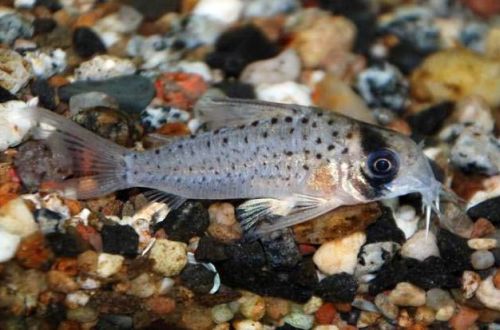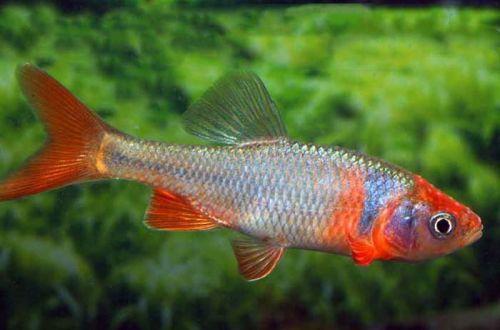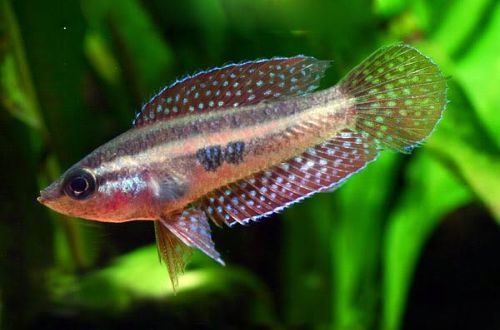
Corridor disguised
Corydoras camouflaged, scientific name Corydoras atropersonatus, belongs to the family Callichthyidae (Shell or callicht catfish). The name refers to the black markings on the fish’s head. Catfish is native to South America, where it inhabits small river systems in the border areas between Ecuador and the northeastern provinces of Peru.

Contents
Description
Adult individuals reach a length of about 4 cm. The color is light silver with many black small specks scattered throughout the body except for the abdomen. A wide dark stripe runs along the head – a characteristic feature of this species. Fins and tail are translucent.
Brief information:
- The volume of the aquarium – from 60 liters.
- Temperature – 21-27°C
- Value pH — 5.0–7.0
- Water hardness – soft (1-10 dGH)
- Substrate type – sandy
- Lighting – subdued or moderate
- Brackish water – no
- Water movement – light or moderate
- The size of the fish is about 4 cm.
- Nutrition – any drowning
- Temperament – peaceful
- Keeping in a small group of 4-6 individuals
Maintenance and care
This is an unpretentious and easy-to-keep fish, perfectly adapts to various water conditions and is not demanding on design. However, it is most comfortable in soft, slightly acidic water, and in decor, the main attention should be paid to the substrate and the presence of shelters. It is advisable to use sandy soil, driftwood, thickets of plants and other design elements, both artificial and natural, where the fish could hide. The size of the aquarium for a group of 4-6 catfish starts from 60 liters.
A clean aquarium is the key to the successful maintenance of the Corydoras disguised, however, any other fish. It is important to prevent the accumulation of organic waste and maintain the hydrochemical composition of the water within acceptable pH and dGH ranges. Of key importance is the uninterrupted operation of the installed equipment, primarily the filtration system, and the regular implementation of a number of mandatory aquarium maintenance procedures (replacing part of the water, removing excrement, food residues).
Food. Considering that a catfish spends a significant part of its time at the bottom, it is necessary to use sinking feed. The basis of the diet can be dry foods (flakes, granules).
Behavior and Compatibility. Due to their peaceful disposition, Corydoras get along well with many non-aggressive fish. Intraspecific relationships are also quite harmonious, catfish prefer to be in a group of 4–6 individuals. Single content is not recommended.





